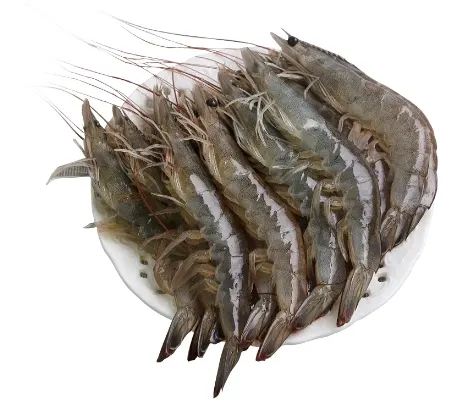Sodium Tripolyphosphate (STPP) is one of the most important functional additives in the
STPP helps maintain water content, protect delicate texture, improve appearance and support
a longer shelf life during freezing, storage and transportation.
Key benefits of using STPP in aquatic products
- Improves water retention and reduces drip loss after thawing.
- Maintains firm, plump texture instead of dry or rubbery flesh.
- Helps stabilize color and surface appearance of fish and shrimp.
- Supports better yield and shelf life when combined with good cold-chain management.
1. Functional Roles of STPP in Seafood Processing
During harvesting, processing, freezing and thawing, aquatic products easily lose moisture
and suffer protein denaturation. STPP acts on proteins and metal ions in the muscle tissue,
buffering pH and binding water so that the product keeps good juiciness and bite after
cooking or reheating.
- Water binding: STPP increases the water-holding capacity of muscle proteins, which helps reduce drip in frozen fish fillets and shrimp.
- Texture protection: Proper use of STPP maintains elasticity and firmness, avoiding the “mushy” texture that appears after multiple freeze–thaw cycles.
- Color and appearance: By chelating metal ions and stabilizing proteins, STPP helps maintain a bright, clean surface and reduces discoloration.
- Yield improvement: Better water retention means higher finished-product yield for processors and more stable weight for buyers.
2. Recommended Dosage of STPP in Aquatic Products (Visual Guide)
The recommended dosage of food-grade STPP varies with product type, processing method and local
regulation. The following chart summarizes typical usage ranges based on total product weight.
* The ranges above are for reference only. Final dosage should always comply with local food-additive
regulations and be validated through pilot trials and sensory evaluation.
Example STPP Dip Solution for Fish or Shrimp
| Component | Function | Typical level in dip solution |
|---|---|---|
| Food-grade STPP | Water retention, texture protection | 3–5% |
| Sodium chloride (optional) | Flavor, ionic strength | 0.5–1.5% |
| Cold water | Solvent, temperature control | Balance to 100% |
Products are normally immersed in the chilled dip solution for a controlled period, then drained,
packed and quickly frozen. Time, temperature and concentration should be optimized to meet both
quality and regulatory expectations.
3. Practical Processing Tips for Using STPP
- Always use certified food-grade STPP with clear specifications and low impurity content.
- Dissolve STPP completely in cold water before adding seafood, and keep the solution well mixed.
- Control soaking time and temperature carefully to avoid over-treatment.
- After dipping, allow products to drain sufficiently before freezing to prevent surface crystallization.
- Record phosphate addition and verify that total phosphorus content meets local limits.
For a broader view of STPP in food systems, you can also read:
Food Additives and Sodium Tripolyphosphate: Truth Analysis
.
FAQ: STPP in Aquatic Products
1. Is STPP allowed in seafood and aquatic products?
In many markets, food-grade STPP is an approved additive for seafood processing when used
within specified limits and according to good manufacturing practice. Processors must always
follow local regulations, label products correctly and keep proper documentation.
2. Will consumers notice STPP in the taste of seafood?
When used at appropriate levels, STPP is mainly perceived through improved juiciness and
firmness rather than a distinct taste. Over-dosing or improper processing, however, may
cause a slightly slippery or overly soft mouthfeel, which is why dosage control is important.
3. How can I avoid over-treating aquatic products with STPP?
Control three factors: concentration of the dip solution, soaking time and product
temperature. Start with a low dosage range, monitor weight gain, and run sensory tests
to determine the optimum point where yield and quality are both satisfactory.
4. What type of STPP is recommended for aquatic applications?
A high-purity food-grade STPP with suitable phase composition and low heavy-metal content
is recommended. Consistent granule size and good solubility make handling easier and help
ensure uniform treatment of each batch of seafood.
5. Can STPP be combined with other phosphates or cryoprotectants?
Yes. STPP is often used together with other approved phosphates or cryoprotectants in
formulated blends. This allows processors to fine-tune texture, water retention and cost,
while keeping total phosphorus within regulatory limits.

